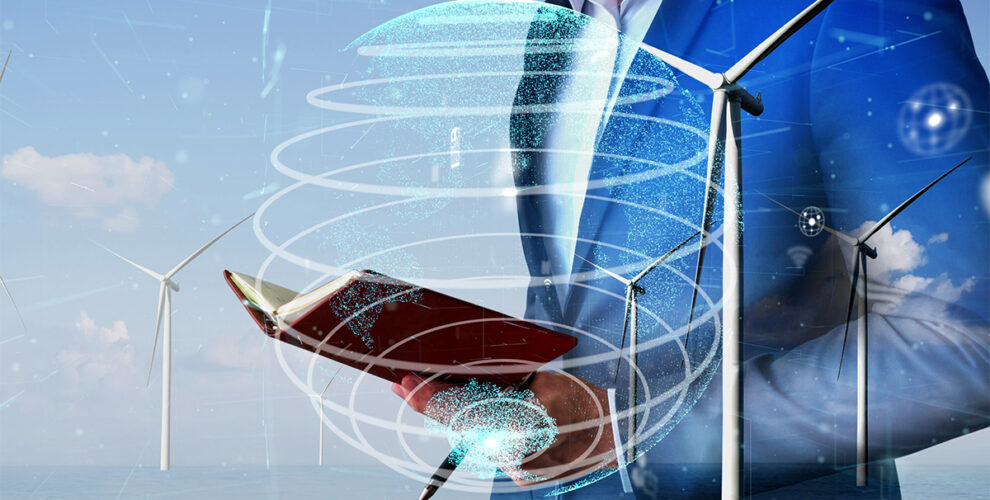Global demand for electricity is rising, and it is doing so roughly twice as quickly as the worldwide demand for other forms of energy. To maintain the global economy, energy conservation, customization, and control have become essential. Electrical engineers must address growing problems in the smart and sustainable energy sectors. There is the role of renewable energy, which helps produce electricity in a better way. It is inevitable that demand for electrical engineers will rise as the energy revolution grows. The top electrical and electronics college in India understands the demand, ensuring that students are required to follow the trends and technologies in this field and receive an idea of the future transformation.
Renewable Energy Power Revolution:
Renewable energy is becoming more and more in demand all over the world, particularly in India. As opposed to non-renewable energy sources like coal, oil, or gas, its abundant natural availability and lower emissions of carbon and other pollutants are the primary reasons.
In order to meet the requirements of both homes and businesses, renewable energy is being used to generate electricity. There is a growing demand for skilled workers who have a background in electrical engineering.
In the coming years, this trend will continue to grow at a rapid rate. For the purpose of making technological advancements in these areas, numerous research activities are underway.
How does renewable energy work?
Renewable energy comes from processes or natural resources that are constantly replenished. Hydro, biomass, geothermal, and wave energy are the other types of renewable energy.
Renewables are becoming a more significant power source. From residential rooftop solar panels to enormous offshore wind farms, the growth of renewable energy is also taking place on both large and small scales. Heating and lighting are both provided by renewable sources in some rural communities.
Solar technologies are used by industries and businesses to save money, increase efficiency, and diversify their energy sources. Solar photovoltaic and solar power technologies are utilized by energy developers and utilities to produce electricity on a massive scale. The electricity grid is being modernized by renewable energy, making it smarter, safer, and interconnected across regions. Let’s discuss how electrical engineers pursuing the best colleges in Coimbatore can learn and experiment with these energies to create technologies that people are likely to utilise.
Five Energy Power Trends in Electrical Engineering:
- The transmission of electrical energy without the use of connecting wires from a power source to a receiver is referred to as wireless power transfer (WPT) or wireless energy transfer. For energy transmission, WPT systems make use of time-varying electromagnetic fields. Heart pumps, security software, and electric vehicle charging docks have all been mentioned as possible applications for wireless power transfer.
- Wearable technology is nothing new; however, the industry must literally think on its feet in order to keep up with electrical engineering trends where it satisfies and meets consumer demand. Electrical engineers from the best EEE college in India have been hard at work creating wearable items that can prevent injuries and accidents in the workplace. Smart clothing has the potential to be used for a variety of other purposes, including location tracking, assisting wearers in locating assistance when they are lost or in danger, detecting injuries and falls, and notifying emergency contacts.
- Smart grids and microgrids promise a better and more cost-effective approach to power generation, in line with current industry trends.
- In order to better manage the delivery of electricity and respond to shifting demand, smart grids use two-way communication between the utility and the customer. In addition, renewable energy sources and storage technologies can benefit from this development in electrical engineering. Customers can sell excess current and generate their own power with smart grids.
A microgrid is a single, controllable entity with respect to the grid made up of interconnected loads and distributed energy resources. On the other hand, to lay it more plainly, microgrids are independent power sources that give capacity to more modest, local area-based regions. Microgrids permit networks to create power nearby when they need it. The current infrastructure for the delivery of electricity could be altered by this trend in power generation.
The electrical design of electric vehicles follows a trend that keeps gaining popularity among consumers. Electric vehicles are becoming increasingly common. Even though charging infrastructure needs to be built, many electric vehicle owners can find charging stations that are easy to get to in many places. Wireless charging will soon be a standard feature on electric vehicles. Drivers can park their cars in a wireless charging location without the requirement for an external connection, in place of huge charging docks. Engineers are able to achieve their full potential by comprehending and analysing current and future trends. The future is far more fascinating, innovative, and competitive; electrical engineers at Top Engineering College in Coimbatore have a lot on their desks today and will have a lot more in the future.


